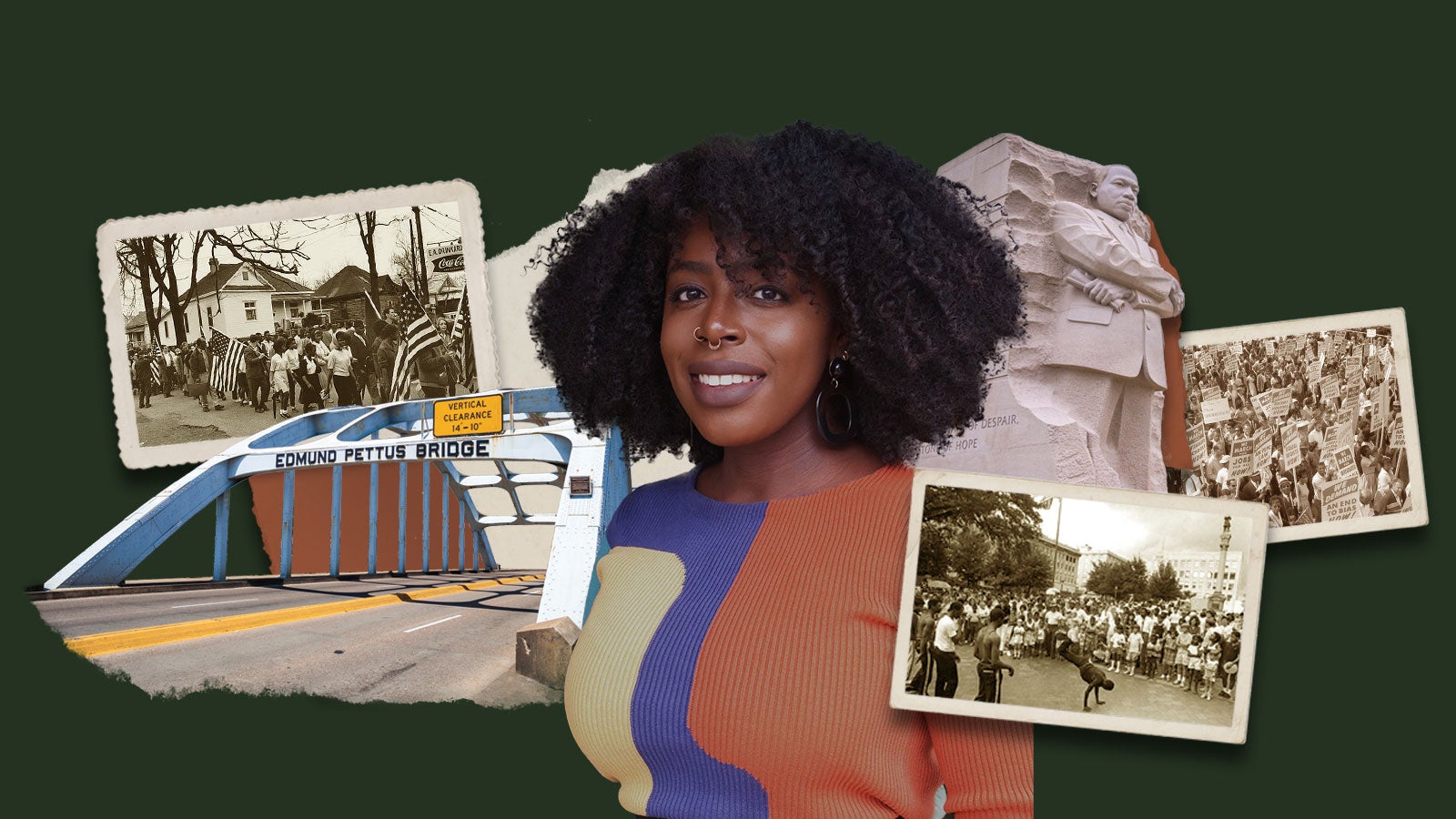
Protector of the Past
Fall 2020 | By Jenna Marina Lee
While most kids were watching Disney films or Nickelodeon shows, Porsha Dossie ’14 ’18MA was consuming Ken Burns documentaries and Roots with her stepfather. Then she would attend school the next day and ask her teacher when the class was finally going to move past the Puritans and learn about Harriet Tubman and Ida B. Wells.
When she looks back at that precocious elementary schooler, she sees the early signs of a passion that led to her job today as program historian for the African American Civil Rights Network within the National Park Service.
“I grew up in Miami, a mixed city compared to other places, and yet we still got a very whitewashed version of history,” she says. “When I got to UCF and I was able to have courses about my history, my professors were really encouraging, telling me, ‘You know you can do this as a job? All of these things you want to research and dive deeper into, this is what we do, and you can do it too.’ That was really affirming for me.”
Now, the Burnett Honors Scholar and two-time history grad is responsible for maintaining the African American Civil Rights Network’s online database. The network presents a comprehensive narrative of the people, places and events associated with the civil rights movement in the United States.
Most recently, she worked to get Florida’s first site — Jacksonville’s James Weldon Johnson Park, where in 1960 a white mob attacked Black protestors with ax handles during a sit-in at a whites-only lunch counter — added to the network. She also wrapped digital resources on The Negro Motorist Green Book — made better known by the 2018 Academy Award-winning film — and on women in the civil rights movement in honor of the 100th anniversary of women’s right to vote, which was celebrated in August.
Her best days on the job are when she can listen to stories from people who interacted with Martin Luther King Jr. or when she hears from someone who accessed the network’s materials.
“I once had someone email me and write, ‘I see my grandfather in that picture [of the Edmund Pettus Bridge] on your website. I had no idea he marched,’ ” she says. “The past isn’t some disconnected, faraway thing. We live it and interact with it every day even if we don’t realize it.”
“The past isn’t some disconnected, faraway thing. We live it and interact with it every day even if we don’t realize it.”Porsha Dossie ’14 ’18MA
What is one place from the African American Civil Rights Network that everyone should experience?
The Medgar and Myrlie Evers Home National Monument in Jackson, Mississippi. It is the former home of Myrlie and Medgar Evers, a married couple who dedicated their lives to the civil rights movement. Medgar was assassinated in 1963 in front of the home, and his murder and the national outrage that followed increased support for the legislation that became the Civil Rights Act of 1964. Myrlie continued not only to do her work with the NAACP in Mississippi, but she also worked for 31 years to bring Medgar’s killer to justice. I think that’s such a powerful story. Myrlie Evers-Williams is still alive, which you can’t say for a lot of civil rights figures.
Who are your heroes?
I have so many, and one of them is Harry T. Moore. I’m trying to get his site on the network. He and his wife, Harriette, were founders of the NAACP in Brevard County and registered more than 10,000 Black voters in Florida. On Christmas night in 1951, Ku Klux Klan members bombed their home in Mims. Because no hospital in Brevard County would care for Black patients, the Moores had to travel 30 miles away to Sanford, and they both died from their injuries. Florida was one of the deadliest states in the South in terms of lynchings. It was so brave for Harry to say, “I want to do this work,” and Harriette to say, “I want to do it with you,” knowing the possible repercussions. I don’t know if I would have had that same courage.
Why is it important to study Black history?
This is U.S. history. I think if more people understood the history of this country and how complicated and messy it is but also how triumphant it can be, we could have a moment of reconciliation that would help heal us. … That’s what I love about history and my role. It’s not just standing in front of a classroom reciting facts. It’s a way to heal and move forward. Because when you know better, you do better.
How does the work you’re doing today support the Black Lives Matter movement?
Quoting many civil rights figures, “Show up where you can.” I look at the work that I can do as being part of that conversation for Black Lives Matter. Everything I do with the Civil Rights Network is informed by a Black radical tradition. A lot of what we’re experiencing now has a precedent in the past that can be looked at for guidance. I think my job within this movement is to do what I can as an educator to provide and share these resources.
Photo credits (left to right): civil rights march from Selma to Montgomery, Alabama, in 1965 (Library of Congress); Edmund Pettus Bridge in Selma, Alabama; James Weldon Johnson Park (formerly Hemming Park) in Jacksonville, Florida (City of Jacksonville); Stone of Hope statue at the Martin Luther King Jr. Memorial in Washington, D.C.; Freedom March on Washington, D.C., in 1963 (Library of Congress)